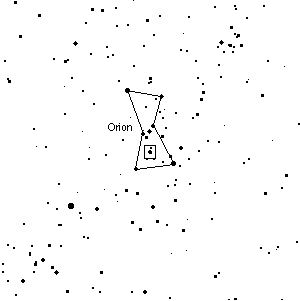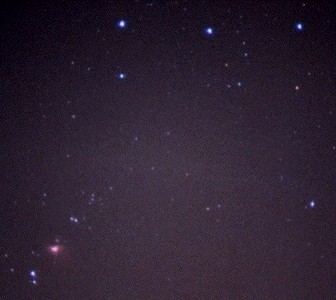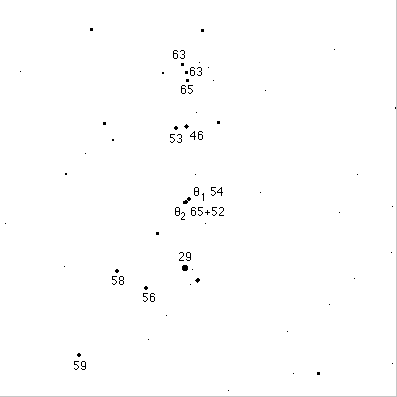
60-degree field of view

This photo represents fairly accurately what you will see through
binoculars, except that the colors will not be as vivid. Photo
by B. Crowell, (c) 1999.
|
How to Find It
The Orion Nebula surrounds the middle stars of Orion's sword.
Comments
M42
Under light-polluted conditions,
the nebulosity may unfortunately be more evident with the naked eye than
through binoculars. You may see something more akin to the star field map
than to the high-contrast telescopic photo. From my urban location, I see
a nebulosity about 15 minutes in diameter around the middle star, and all I
see in the area of M43,
the northern "head" of the nebula, is the two stars it contains, which are the top of
the sword. Two multiple stars lie at the center of the nebula and illuminate it. Theta 1,
on the upper right, is actually a quadruple star, known as the trapezium, whose brightest
member shines at magnitude 5.4. The other three members of the trapezium are much dimmer, and
not easily resolved at low magnification. Theta 2, on the lower left, is a double which can
easily be split through binoculars. It consists of stars of magnitude 5.2 and 6.5, with the
dimmer one lying almost directly to the left (east) at a separation of just under an arc minute.
NGC1981
Just above the top of Orion's sword lies the open cluster NGC1981, whose most prominent members
are a north-south string of three 6th magnitude stars.
|






